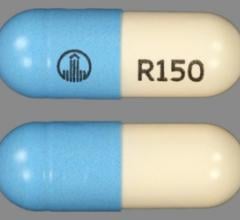
May 25, 2016 — Technavio’s latest report on the U.S. anticoagulants market provides an analysis on the most important trends expected to impact the market outlook from 2016-2020. Technavio defines an emerging trend as a factor that has the potential to significantly impact the market and contribute to its growth or decline.
The top three emerging trends driving the anticoagulants market in the United States, according to Technavio healthcare and life sciences research analysts, are:
- Expected exploitation of new therapeutic use;
- Patient assistance programs; and
- Declining shares of heparin market.
Expected exploitation of new therapeutic use
Heparin and related drugs are widely used for their anticoagulant activities. However, it has been identified that heparin exhibits anti-inflammatory activities and prevents the metastatic spread of tumor cells. Heparin exhibits anti-inflammatory activity by neutralizing cationic mediators, inhibiting adhesion molecules and heparanase, which are involved in leukocyte recruitment into tissues. Similarly, research studies indicate that heparin acts as an inhibitor of cell adhesion and elicits anti-metastatic activities. The drug is also found to target P- and L-selectin, and integrin activity, preventing cancer progression. Further studies are being conducted to exploit the use of heparin as an anti-inflammatory and antitumor agent. With frequent innovations there has been an increase in the development of heparin drugs as novel formulations and for the treatment of new indications.
“Ockham Biotech is developing inhaled heparin for the treatment of airway diseases, cystic fibrosis and asthma either alone or in combination with other drugs under various stages of development. Also the LMW Heparin MMX, which is under the Phase II stage of development by Cosmo Pharmaceuticals, is indicated for the treatment of ulcerative colitis,” said Barath Palada, a lead analyst at Technavio for cardiovascular and metabolic disorders research.
Patient assistance programs
Patient assistance programs for anticoagulants are expected to boost the growth of the market during the forecast period. The vendors in the market are providing co-pay assistance to patients who are purchasing the indicated medications for coagulation disorders. For instance, Daiichi Sankyo’s drug Savaysa has an assistance program to provide financial assistance to those consuming the drug. According to the support program, eligible patients are provided with a Savaysa Savings Card, which is available at $4 for a 30-day prescription and at $12 for a 90-day prescription. However, individuals who are enrolled for the Medicare/Medicaid program are not eligible for this savings program. Similarly, BMS provides assistance to patients buying its drugs through the Bristol-Myers Squibb Patient Assistance Foundation.
Only residents of the United States who are not insured under any other public or private insurance are eligible for assistance under this scheme. Apart from these, Janssen’s Xarelto CarePath Savings Card and Boehringer Ingelheim’s Pradaxa Savings Card allow eligible patients to acquire the drugs with minimum payment. “Since such assistance programs are provided by the drug suppliers, patients feel inclined toward purchasing branded therapies,” said Barath.
Declining shares of heparin market
The share of the heparin drugs market, which constitutes over half of the overall anticoagulants market, is declining at a significant rate owing to the availability of improved drugs in the market. This has reduced the overall heparin production, especially in developed countries because of shrinking demand from end-users. China remains the largest heparin active pharmaceutical ingredient (API) producer in the world and has a share of 80 percent of the global heparin API market. The market grew exponentially till 2009, and then experienced a decline due to the restrictions imposed after the 2008 adulterated heparin disaster, which led to the loss of hundreds of lives. This led to a decline in demand for heparin in Western countries and increased the regulatory standards for heparin API. However, the market has been experiencing slow growth in terms of the volume of heparin API being exported to other countries.
For more information: www.technavio.com


 August 28, 2023
August 28, 2023 








